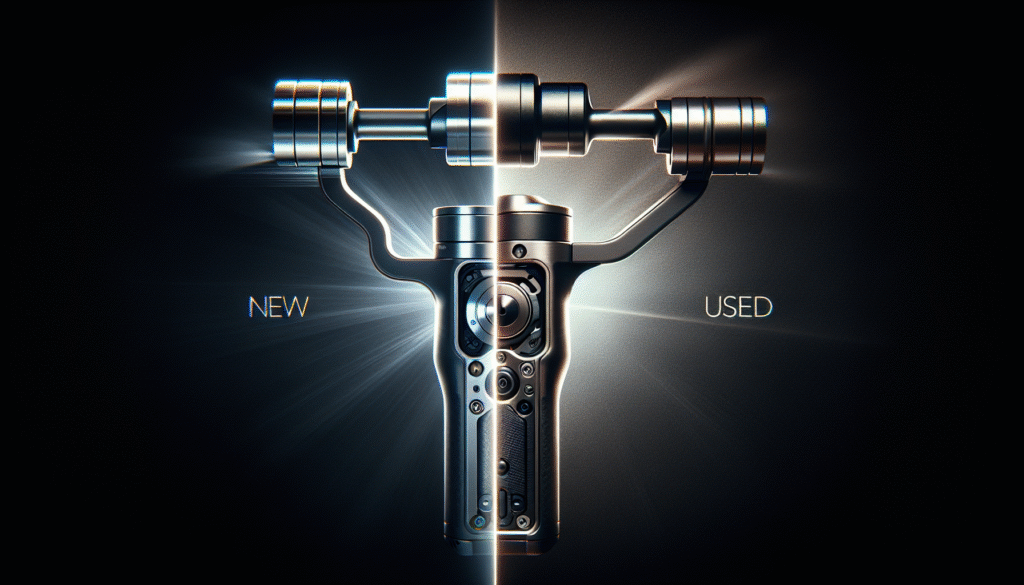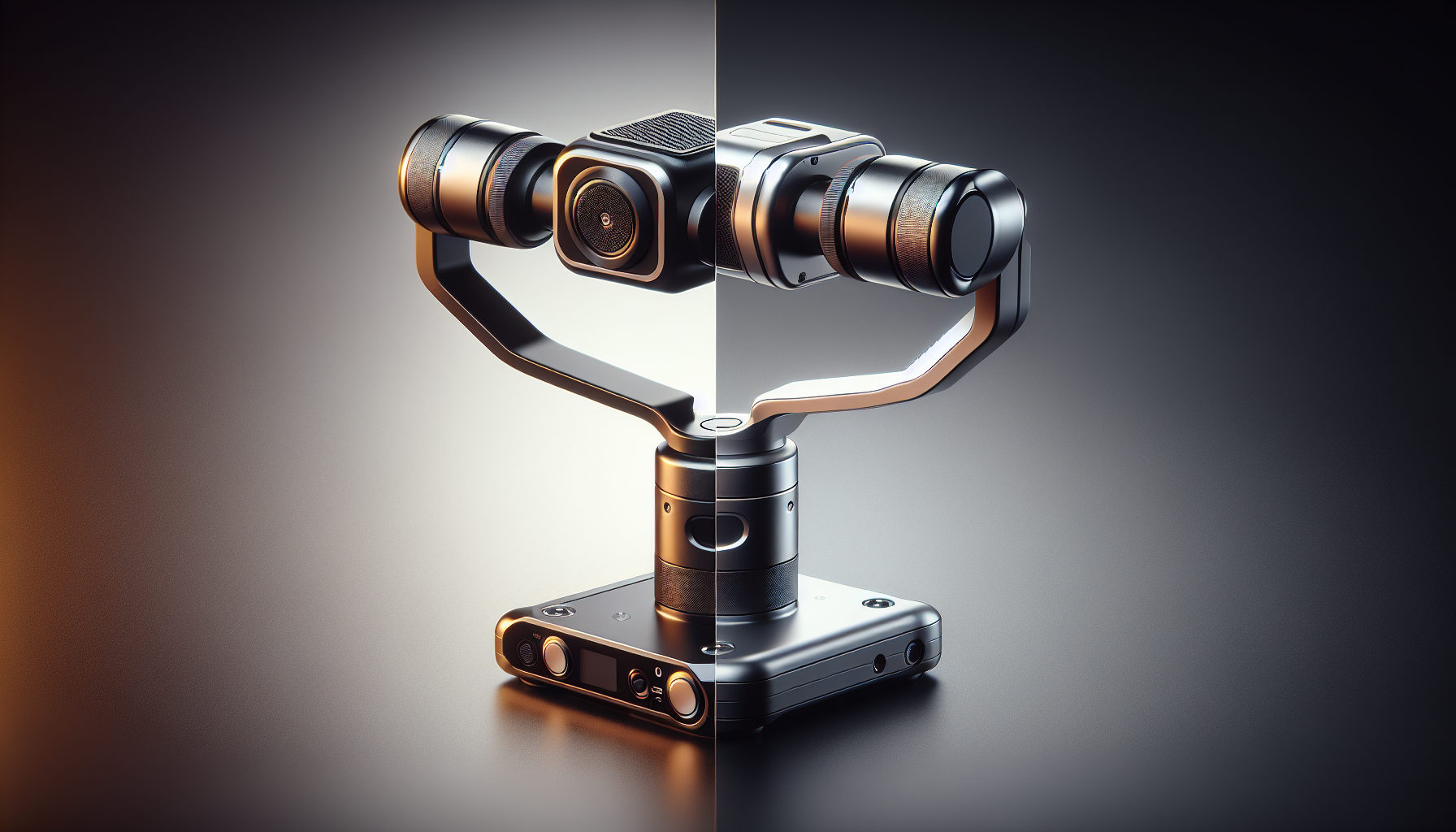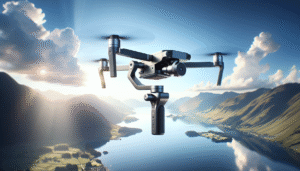Have you ever found yourself standing in the middle of a tech store or scrolling through online marketplaces wondering whether it’s smarter to splurge on a new gimbal or to snag a used one at a fraction of the cost? It’s a dilemma many aspiring filmmakers and content creators face when they’re trying to get more cinematic shots without completely emptying their piggy banks.

The Allure of New Gimbals
When I think about shiny new gadgets—the unboxing experience, the pristine condition—I’m like a kid in a candy store. There’s something magical about the untouched newness. Fresh off the assembly line, new gimbals have never had anything to do with dust or fingerprints of any kind. They come with warranties, support from the manufacturer, and the latest in technological advancements. You’re getting the latest firmware, and the battery hasn’t had a second less of its life diminished by previous users.
Advantages of Buying New
- Warranty and Customer Support
A new gimbal comes with peace of mind in the form of a manufacturer’s warranty. Should any hiccups occur—whether it’s a slight malfunction or a massive failure—you’re covered. No need to contemplate becoming a makeshift gadget repair person. You get someone on the phone who knows their product inside and out, ready to walk you through any technical difficulties. - Latest Features and Updates
When a company releases a new model, it often comes packed with the latest features. What’s cutting-edge today could become obsolete tomorrow as technology evolves at breakneck speed. By purchasing new, you’re always on the forefront with enhanced stabilization algorithms or connectivity options that a used model might lack. - Optimal Performance
New gimbals guarantee that there’s no prior wear and tear to disrupt your creative process. The motors are powerful, and the battery life is as good as it gets. There’s a certain satisfaction in knowing that you won’t face unexpected glitches that can come with a used product.
Limitations of Buying New
- Higher Cost
The most glaring downside of buying new is the price tag. Innovation and a fresh-off-the-factory scent aren’t cheap. For someone starting a new project or on a limited budget, this might be one indulgence too many. - Depreciation
Like cars, electronics can depreciate quickly. The moment you leave the store or click ‘buy now,’ its value begins to decrease. It’s a fact of life; that brand new gimbal might only fetch a fraction of the cost if you decide it’s not for you and try to sell it a few months down the line.
The Prospects of Used Gimbals
On the other side of the coin, used gimbals often present themselves as the thrifty solution for the budget-conscious. Here, you could find a hidden gem—a device that performs similarly to its newer counterpart but doesn’t come with the same steep price.
Advantages of Buying Used
- Cost Savings
The most compelling advantage is the money you’ll save. You might get last year’s flagship model with nearly the same technical specifications as the current one, but at a significantly reduced price. - Ecosystem Compatibility
Often, manufacturing companies do not radically change the essentials year over year, meaning last year’s model could still be compatible with newer accessories or software improvements. - Sustainability
Purchasing used helps promote sustainability by reducing electronic waste. This can be a selling point for those of us who love our planet and want to make more eco-friendly choices.
Risks of Buying Used
- Potential Wear and Tear
This is the heart-in-throat moment for any used device purchase. You might not know how the previous owner handled the gimbal. Was it dropped? Was it used infrequently and stored in a Californian beach house where sea air and salt are plentiful? Aesthetic imperfections might not matter much, but functional issues like motor wear could make or break your purchase. - No Warranty
Most used gimbals come without a safety net. Once you’ve bought it, anything that goes wrong is typically your responsibility. Sure, there’s the universe of DIY fixers on YouTube, but sometimes you just want to make videos rather than finding yourself submerged in the labyrinth of wires and screws. - Missing Features
If you’re vying for a used gimbal that’s a few years old, it might lack features that newer models have, such as enhanced stabilization techniques or better connectivity options.

Let’s Weigh Them Together
Sometimes, visuals offer the clarity that words cannot. So, what if we break this down?
| Factor | New Gimbals | Used Gimbals |
|---|---|---|
| Cost | High | Low |
| Warranty | Yes | Rarely |
| Latest Features | Yes | Sometimes |
| Performance | Optimal | Variable |
| Depreciation | Quick | Already Accounted for |
| Sustainability | Less Sustainable | More Sustainable |
As someone who likes to spend money wisely, making a spreadsheet every time I consider buying technology is where I find my happy medium. Suddenly, I see numbers matched up against how much I want to be on the cutting edge, and it springs a decision into resolute focus.
Compromising with Diplomatic Knowledge
When pondering the new versus used gimbal conundrum, there are strategies and questions I ask myself to find out which is more “me” at the moment.
Consider How Often You’ll Use It
This is paramount. Are you a videographer using gimbals daily for professional projects? If yes, investing in a new model could be essential for reliability and consistent support. However, if you are an enthusiast who uses the gimbal for occasional travels or personal projects, a well-cared-for used model might be perfectly adequate.
Investigate the Marketplace
Before committing to buying new or used, it’s beneficial to research the marketplace. Sometimes discounts, sales, or overstocked items can drive the price of a new model down to temptingly close to that of a used one.
Understand Your Needs
Ask yourself what features you truly need and which ones are more of a “nice to have.” This way, you don’t get swayed by dazzling new specifications that you’ll never implement in your projects.
Embrace a Community of Knowledge
Forums, Reddit threads, and YouTube reviewers thrive in the tech space. These platforms are gold mines when probing specific gimbal models. Others have walked this similar path, delved into the labyrinth of gimbals, danced the dance, and shared insights for folks like me who are sometimes far too shy to shout out inquiries in the store.
My Takeaway: Finding Your Gimbal Philosophy
In wrapping up my internal debate between new and used gimbals, it’s about balancing priorities. It boils down to opportunity cost. If saving money means more resources for other projects or gadgets, going for a used gimbal could be the smarter pick. If reliability, up-to-date functionality, and smooth support are paramount, the allure of a new tool might be too great to resist.
As in many things, it seems that my experience with gimbals paved a road of personal enlightenment: that it isn’t merely about choosing new or used but perhaps finding what fits you at the moment—a philosophy equally applicable to gadgets as to any uncharted journeys of life.
![Best Gimbal For DJI Mini 4 Pro In 2025 [Top Picks + Quick Deals]](https://droneaperture.com/wp-content/uploads/2025/06/best-gimbal-for-dji-mini-4-pro-in-2025-top-picks-quick-deals-1-300x171.png)
![Top 5 Drone Gimbals For Cinematic Footage Under $500 [2025 Tested]](https://droneaperture.com/wp-content/uploads/2025/06/top-5-drone-gimbals-for-cinematic-footage-under-500-2025-tested-300x171.png)
